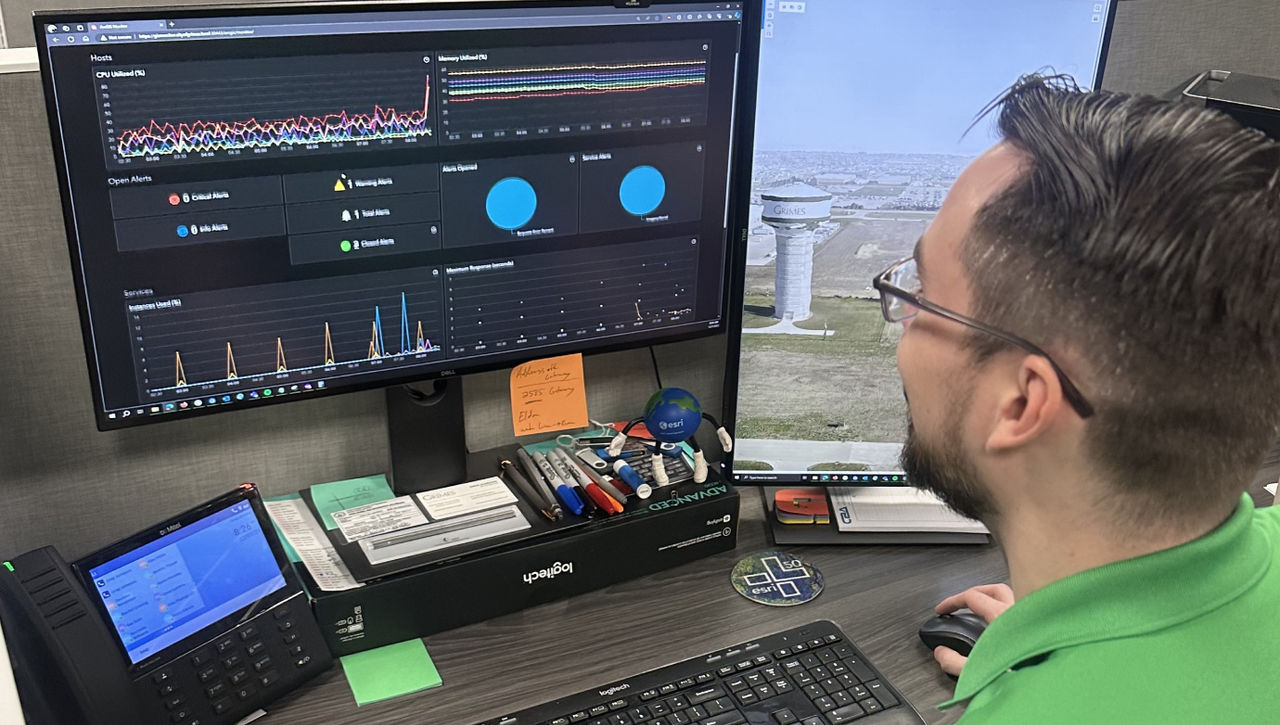The self-hosted monitoring tool the city used previously delivered limited insight. Jameson explains that although it was helpful to validate that the administration web pages of the GIS servers were up and responding within the last 20 minutes from a web service, it didn’t provide other details on how the enterprise portal was working. Essentially, it only indicated whether a service could receive web traffic. Jameson wanted more insight and capabilities.
“At the end of the day, our city council wants to make sure we're being the best fiscal stewards that we can. And so having some metrics to highlight what is our uptime, how much is being used, how is it cutting down on staff time to find data to do things [is helpful]. And [our previous tool] just doesn't give us any of that,” says Jameson.
The additional insight would also help Jameson know if he was properly publishing services. As the ArcGIS Enterprise deployment was new to the city, he wanted to get data on specific items such as the accuracy of load balancing numbers, maximum instances being used, performance of services, or identifying the core services that might have more end-user demand. With limited time, Jameson wanted more informed metrics delivered to him.
“Because I'm new to ArcGIS Enterprise, I want to [see] if I should select a shared or a dedicated instance? That is so specific, and I don't have that time to go and hunt that [data] down,” he explains. “I only have so much time in the day to validate services or things that are up. So, it was more of a reactive situation for me.”




